December 10, 2015, 4:43 pm | by Ray Nardo
Much Forethought Goes Into Proper Fall Protection Installation
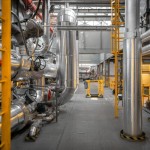 From a fall protection installation standpoint, the primary goal of the system being installed is to protect workers. The objectives are to get the right system, at the right price, installed on time and on budget, with minimal disruption to the normal activities of the business. Read more.
From a fall protection installation standpoint, the primary goal of the system being installed is to protect workers. The objectives are to get the right system, at the right price, installed on time and on budget, with minimal disruption to the normal activities of the business. Read more.
November 17, 2015, 9:53 am | by Ray Nardo
Pre-Plan Fall Protection On New Construction During The Design Phase
 For new construction projects, we are often asked to bid on procurement and installation of fall protection equipment. All too often, we find that it is treated as an afterthought, rather than an integral component of a well-designed building. We are alarmed whenever a contractor who has asked us to bid a project says, “They will add that later”, when we point out that the plans and specifications either say nothing about fall protection, or mention it without providing any scope, location or other layout information. Read more.
For new construction projects, we are often asked to bid on procurement and installation of fall protection equipment. All too often, we find that it is treated as an afterthought, rather than an integral component of a well-designed building. We are alarmed whenever a contractor who has asked us to bid a project says, “They will add that later”, when we point out that the plans and specifications either say nothing about fall protection, or mention it without providing any scope, location or other layout information. Read more.
October 29, 2015, 12:43 pm | by Ray Nardo
 At first glance, fall protection for universities and colleges is not something you would think there is much need for, but fall hazards abound nevertheless. Take a critical look around any university or college campus, and you will often find numerous work areas where maintenance people, contractors, and even students might encounter dangerous hazards. The following are some of the more common areas on college campuses that should not be overlooked: Read more.
At first glance, fall protection for universities and colleges is not something you would think there is much need for, but fall hazards abound nevertheless. Take a critical look around any university or college campus, and you will often find numerous work areas where maintenance people, contractors, and even students might encounter dangerous hazards. The following are some of the more common areas on college campuses that should not be overlooked: Read more.
April 6, 2015, 10:29 am | by Ray Nardo
 In our last blog post, we talked about how to form a safety committee at your company. This group should be responsible for developing and maintaining your company’s safety procedures, including your fall protection plan. It should also be responsible for promoting a safety culture at your company, and for ensuring your compliance with OSHA regulations. Read more.
In our last blog post, we talked about how to form a safety committee at your company. This group should be responsible for developing and maintaining your company’s safety procedures, including your fall protection plan. It should also be responsible for promoting a safety culture at your company, and for ensuring your compliance with OSHA regulations. Read more.
March 24, 2015, 10:17 am | by Ray Nardo
 A few weeks ago, we posted an article about how to develop a safety culture in your workplace. One of the suggestions we gave was to form a committee to address worker concerns about fall protection and other issues related to the health and well-being of employees. Today, we take a closer look at safety committees.
A few weeks ago, we posted an article about how to develop a safety culture in your workplace. One of the suggestions we gave was to form a committee to address worker concerns about fall protection and other issues related to the health and well-being of employees. Today, we take a closer look at safety committees.
A safety committee allows executives, management, and workers to collaborate on the greater goal of creating a facility free from hazards that threaten the well-being of employees. This group should be responsible for defining procedures for your company, promoting the safety culture, and ensuring your compliance with OSHA and other federal and state regulations. Read more.
March 4, 2015, 10:30 am | by Ray Nardo
 If you live on the East Coast, we don’t need to tell you that the past couple of weeks have been unbelievably cold! The Atlantic seaboard has seen record-low temperatures and sub-zero wind chills almost daily, with heavy infusions of snow and ice. As Johnny Carson used to say, “It’s so cold out that snowmen are heading south for the winter, and polar bears are putting on bearskin coats!” Read more.
If you live on the East Coast, we don’t need to tell you that the past couple of weeks have been unbelievably cold! The Atlantic seaboard has seen record-low temperatures and sub-zero wind chills almost daily, with heavy infusions of snow and ice. As Johnny Carson used to say, “It’s so cold out that snowmen are heading south for the winter, and polar bears are putting on bearskin coats!” Read more.
February 2, 2015, 2:17 pm | by Ray Nardo
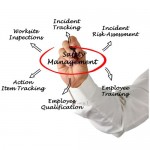 On-the-job safety is a concept that should, of course, extend beyond the use of fall protection systems and fall safety equipment. You should try to develop a culture of safety in your company, and promote that culture in every environment within the facility. Read more.
On-the-job safety is a concept that should, of course, extend beyond the use of fall protection systems and fall safety equipment. You should try to develop a culture of safety in your company, and promote that culture in every environment within the facility. Read more.
November 4, 2014, 10:38 am | by Ray Nardo
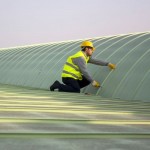 Rooftops are among the most common elevated areas where general industry work is performed. But they are also one of the most common areas where injuries or deaths occur as a result of a fall.
Rooftops are among the most common elevated areas where general industry work is performed. But they are also one of the most common areas where injuries or deaths occur as a result of a fall.
The types of work performed on rooftops is wide-ranging. It isn’t just limited to roofing contractors. School janitors may need to venture up to retrieve a lost soccer ball. Office maintenance or physical plant personnel may need to go up to clean out the gutters, or to remove snow in winter. Read more.
August 28, 2014, 10:51 am | by Ray Nardo
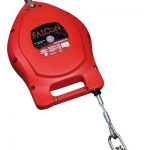 When discussing the effectiveness of certain types of fall protection equipment, there is a debate going on these days over which type of connector is best: self-retracting lifelines (SRLs) or 6-foot shock absorbing lanyards (the connector is the device that links the body harness to an anchorage, such as an overhead fixed track or single-point anchor points). It is our opinion that SRLs are the best type of connector. Yes, lanyards are less expensive, but SRLs provide more effective fall protection, and are worth the extra money you spend. Read more.
When discussing the effectiveness of certain types of fall protection equipment, there is a debate going on these days over which type of connector is best: self-retracting lifelines (SRLs) or 6-foot shock absorbing lanyards (the connector is the device that links the body harness to an anchorage, such as an overhead fixed track or single-point anchor points). It is our opinion that SRLs are the best type of connector. Yes, lanyards are less expensive, but SRLs provide more effective fall protection, and are worth the extra money you spend. Read more.
May 9, 2014, 11:06 am | by Ray Nardo
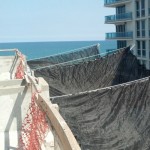 Construction sites and demolition operations come with their own set of unique fall hazards. Putting people in serious danger and structures at risk for major damage, these scenarios have potentially costly ramifications in terms of both lives and dollars.
Construction sites and demolition operations come with their own set of unique fall hazards. Putting people in serious danger and structures at risk for major damage, these scenarios have potentially costly ramifications in terms of both lives and dollars.
Safety netting, also known as debris or personnel netting, helps to prevent fall hazards around construction sites and demolition operations. Read more.
 From a fall protection installation standpoint, the primary goal of the system being installed is to protect workers. The objectives are to get the right system, at the right price, installed on time and on budget, with minimal disruption to the normal activities of the business. Read more.
From a fall protection installation standpoint, the primary goal of the system being installed is to protect workers. The objectives are to get the right system, at the right price, installed on time and on budget, with minimal disruption to the normal activities of the business. Read more.









